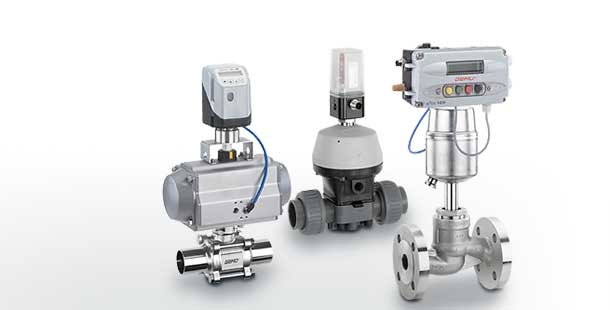Enhance Effectiveness With Top-Quality Building Automation Controls Consisting Of Controllers
In the world of contemporary building monitoring, the application of excellent building automation controls, consisting of innovative controllers, has become a pivotal aspect in improving operations and taking full advantage of effectiveness. As buildings proceed to develop into smarter, extra interconnected entities, the duty of automation controls and controllers has actually never ever been a lot more crucial.
Advantages of Structure Automation Controls
When implemented properly, building automation controls provide a myriad of benefits to improve operational effectiveness and enhance source utilization. Among the primary advantages is the ability to control and check numerous building systems such as HVAC, illumination, protection, and more from a centralized platform. This central control allows for much better sychronisation and synchronization of various systems, bring about boosted power performance and lowered operational expenses.
In addition, building automation controls supply real-time information and analytics, making it possible for center supervisors to make informed decisions without delay. By having accessibility to comprehensive understandings right into power intake, equipment performance, and occupant actions, organizations can determine areas for improvement and execute methods to enhance general building efficiency.
In addition, automation controls aid in predictive maintenance by finding possible issues before they intensify right into costly problems. This positive technique not only extends the life-span of equipment yet additionally reduces downtime, making certain continuous operations - control valves. Generally, the benefits of structure automation controls contribute in streamlining processes, boosting efficiency, and developing a much more comfy and sustainable atmosphere for occupants
Trick Functions of Controllers
Efficient structure automation controls are defined by a range of crucial features that make it possible for centralized administration and optimization of various building systems. One crucial attribute of controllers is their capability to gather data from sensing units dispersed throughout the structure.
In addition, controllers offer the versatility of programs routines for various building systems based upon occupancy patterns, aiding to minimize power wastage throughout off-peak hours. Additionally, the remote access function of controllers allows center supervisors to keep track of and regulate developing systems from anywhere, enhancing benefit and responsiveness.
Furthermore, advanced controllers typically come equipped with predictive maintenance abilities, allowing aggressive identification of possible issues before they escalate, thus decreasing downtime and upkeep expenses (control valves). Overall, the essential functions of controllers are critical in streamlining building operations, boosting convenience, and making best use of power financial savings
Integration With Iot Modern Technology
Building automation controls, especially controllers with their sophisticated functions, flawlessly integrate with IoT modern technology to transform building monitoring procedures. IoT modern technology makes it possible for these controllers to collect and examine data from different structure systems in real-time, providing unprecedented insights right into power usage, system efficiency, and passenger actions. By leveraging IoT connection, developing automation controls can maximize power performance, improve occupant convenience, and make sure proactive maintenance.
The assimilation look these up of building automation manages with IoT modern technology permits central monitoring and control of diverse building systems remotely. This connection makes it possible for building managers to adjust setups, routine procedures, and get notifies on their smartphones or computer systems, enhancing operational effectiveness and lowering maintenance prices. Furthermore, IoT combination assists in data-driven decision-making by providing actionable knowledge based upon patterns and fads determined via constant monitoring.
Power Effectiveness Solutions

Building automation controls, view it now including power management systems and programmable controllers, are necessary components of energy effectiveness remedies. These systems enable real-time tracking of power use, recognition of ineffectiveness, and execution of automated adjustments to optimize energy efficiency (control valves). By incorporating structure automation controls with energy-efficient equipment and innovations, facilities can enhance operational efficiency, improve passenger convenience, and contribute to a greener environment

Enhancing Structure Security
With a focus on enhancing functional aspects beyond energy performance options, the next crucial aspect to address in structure management is the enhancement of safety actions. Building automation controls play a critical function in strengthening security by integrating different systems such as accessibility control, security cameras, and intrusion detection. These controls not only improve safety procedures however additionally give real-time monitoring and signals, enabling prompt responses to potential threats.
Conclusion
To conclude, developing automation controls, particularly controllers, provide various benefits such as improved efficiency, assimilation with IoT modern technology, power performance options, and improved safety steps. By using excellent building automation controls, buildings can run extra properly and sustainably, causing cost savings and boosted total efficiency. Purchasing these advanced modern technologies can dramatically improve the operational performance of structures and add to a more lasting future.
In the realm of modern structure administration, the implementation of top-notch structure automation controls, including innovative controllers, has come to be a pivotal element in making the most of and simplifying operations performance.Effective building automation controls are defined by a range of crucial features that make it possible for centralized monitoring and optimization of various structure systems.Structure automation controls, especially controllers with their innovative functions, flawlessly integrate with IoT innovation to revolutionize structure monitoring processes.The read the article combination of structure automation controls with IoT modern technology allows for centralized surveillance and control of diverse building systems from another location. By utilizing top-notch building automation controls, buildings can run more successfully and sustainably, leading to set you back savings and enhanced general efficiency.
Comments on “The Function of Control Valves in Fluid Flow Administration Solution”